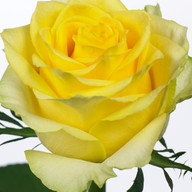
‘If the rose puzzled its mind over the question of how it grew, it would not be the miracle that it is’
J.B. Yeats
Poets, artists, gardeners; over the centuries, roses have inspired them all. The ultimate emblem of love, it’s no wonder they are such enduring and popular flowers for weddings, anniversaries and romance.
The Victorians were enamoured by roses and had a special meaning for every colour, type and shape.
Even now, consumers will still ask about the relevance of the colour of a rose when sending a bouquet that has particular significance.
In the modern language of flowers, the red rose stands for love, white for innocence, pink is thankfulness, yellow for friendship, peach, appreciation and lilac, for enchantment.
The earliest cultivation of the rose goes back to Mediterranean areas around 500BC. There are over 300 species with upwards of 30,000 cultivars in every colour, shade, tint and tone – but still no true black or blue.
Origin: Northern hemisphere.
Flower Family: Rosaceae.
Availability: All year round.
Rose Care
Vase Life: 5-10 days.
Temperature Range: 2-5°C.
On arrival, recut stems and stand in deep water, removing all foliage below the water line.
Keep any packaging to support the heads in place while they hydrate.
Leave in water overnight if possible, or for a minimum of 4-6 hours in a cool spot before using.
Moving roses to a warm room will encourage them to open.
When removing thorns take care to not strip off any green bark, this will shorten their vase life.
Bent neck in roses is caused by early harvesting and dehydration. If this occurs, re-cut stems and submerge in warm water for approximately 20 minutes.
For more in-depth rose conditioning advice, check out this other article I wrote gearing up for Valentine's Day.











